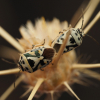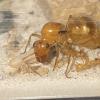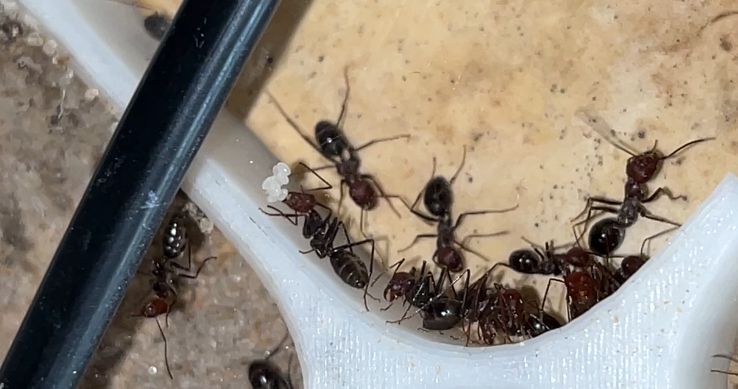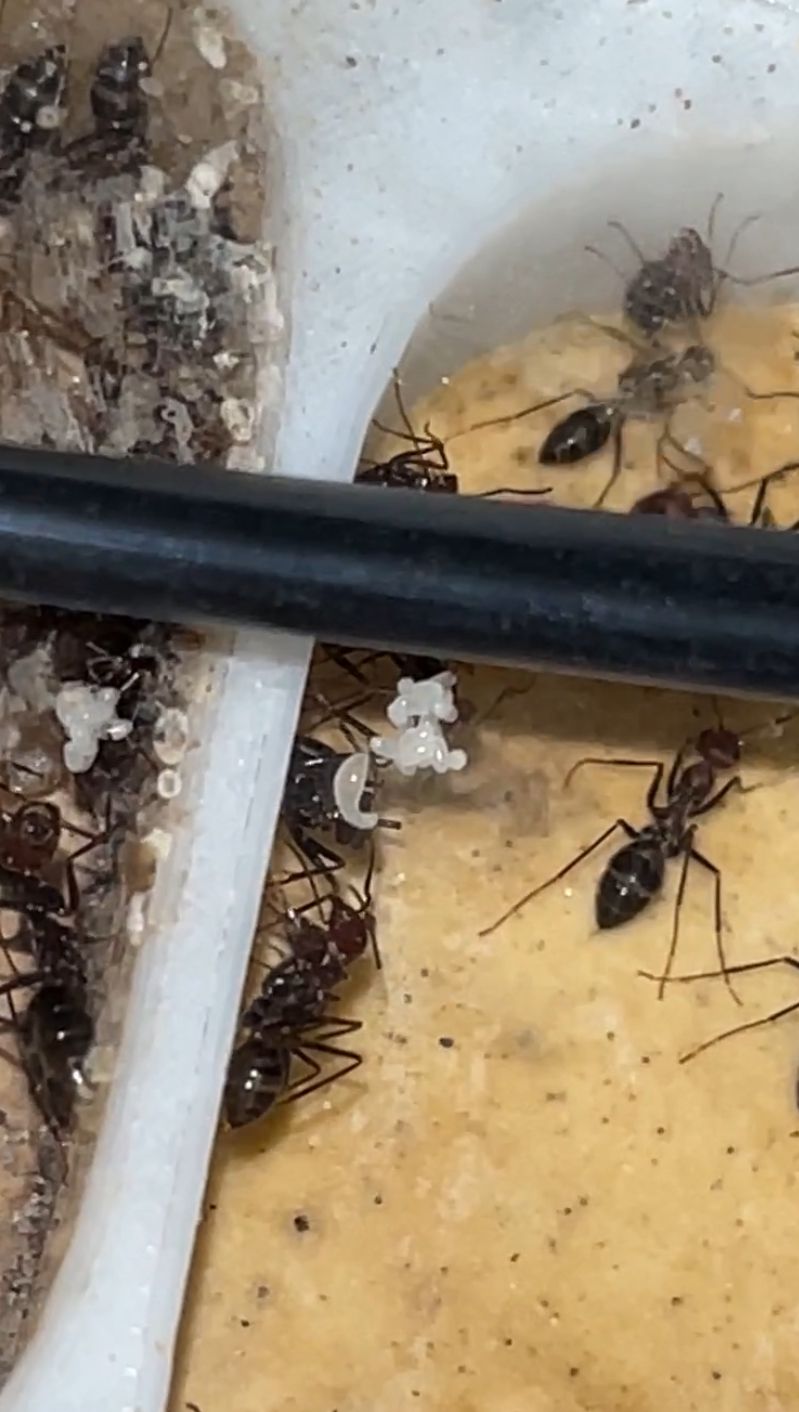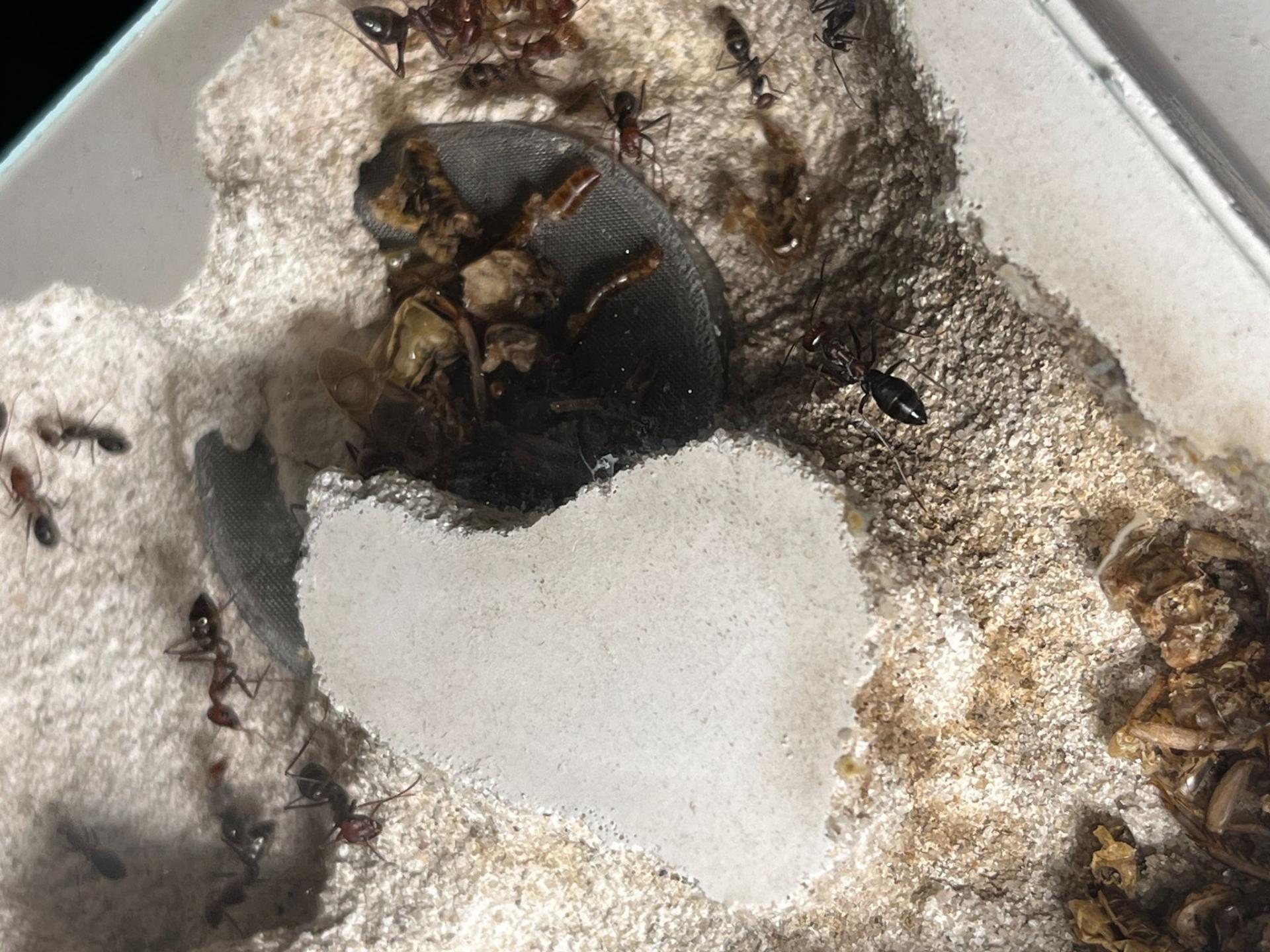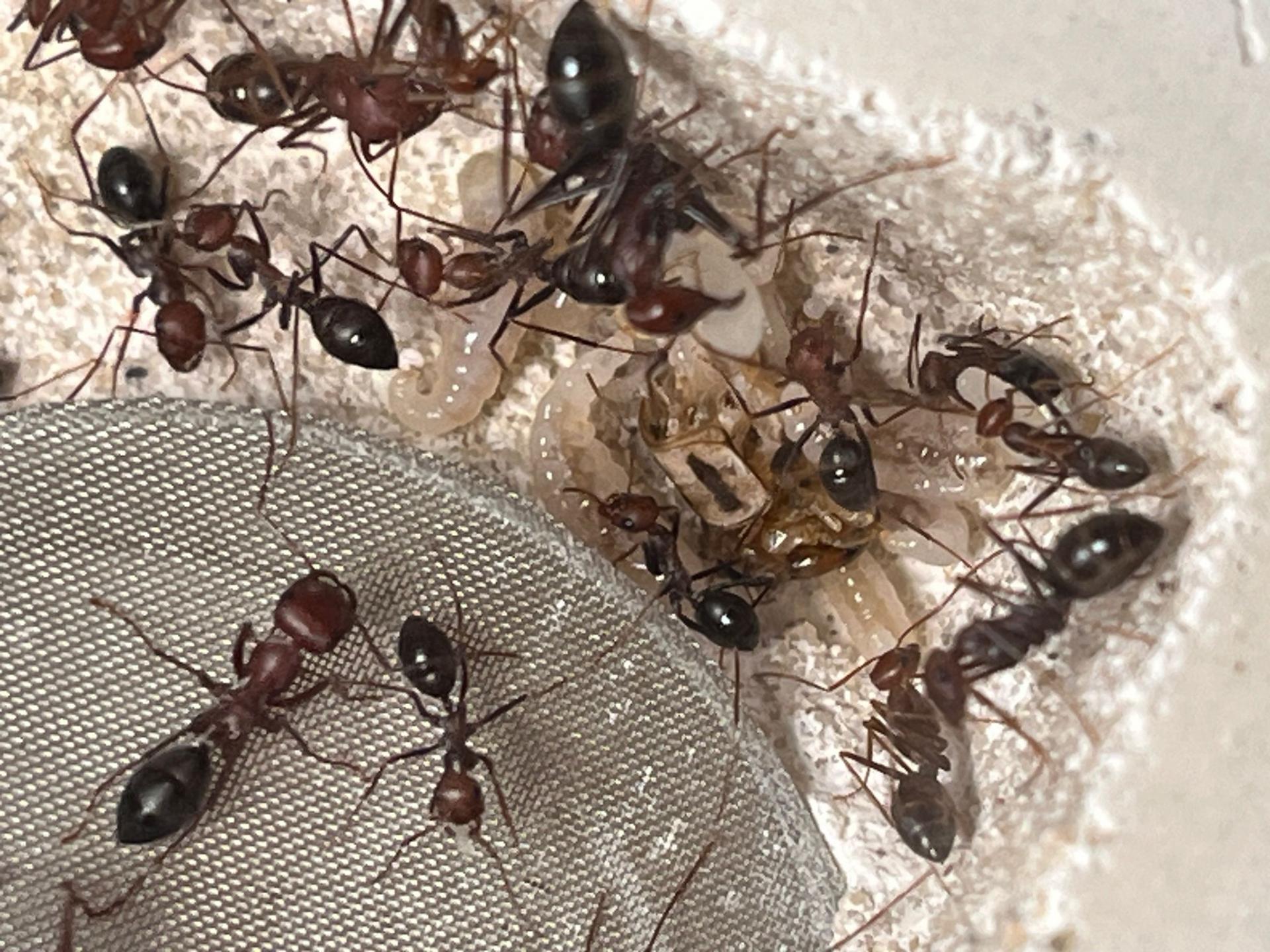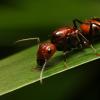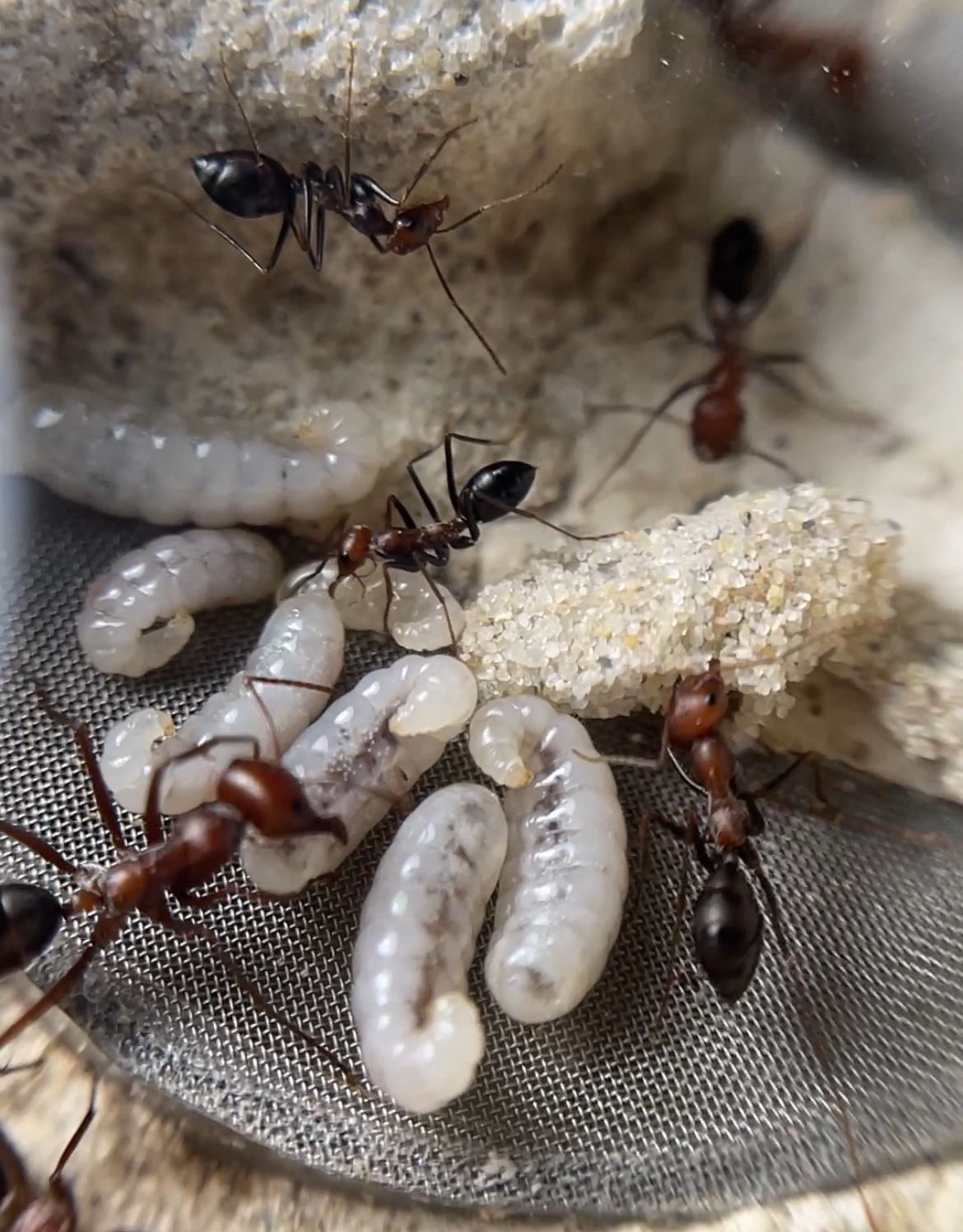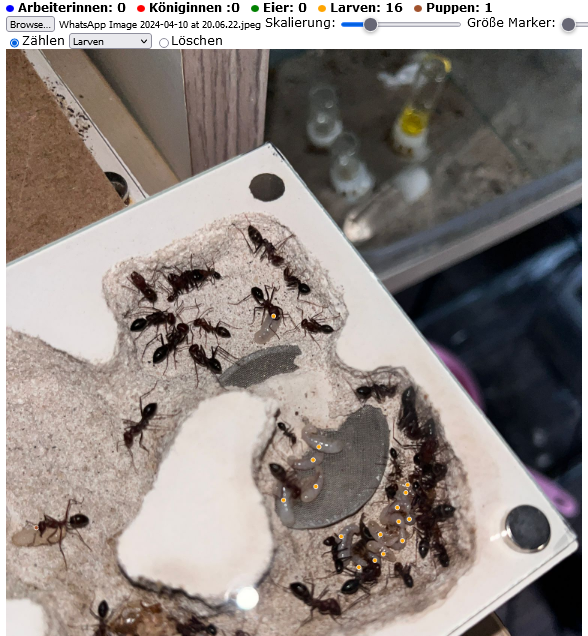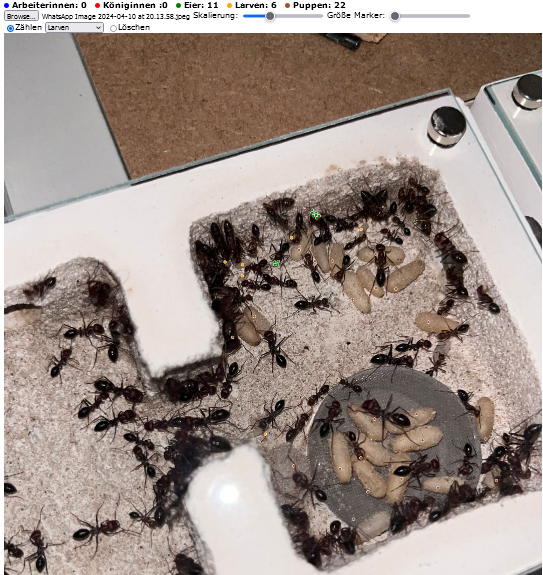Hello, in this journal I will post about one of my Cataglyphis nodus colonies.
Basic information about Cataglyphis nodus:
Cataglyphis nodus is a species that's native to some parts of Europe, Anatolia, Middle East, North Africa, Caucasus and some parts of Central Asia. They're mostly found nesting in sandy soils and dry stony habitats. Being a thermophilic species they're the most active during midday, looking for dying/dead insects ( usually killed by the heat ) to feed to their hungry larvae. Those '' gathering sessions'' can quickly turn into an epic sight when loads of workers turn back to their nest with insects between their mandibles quickly one after another.
Introduction:
I got my colony with around 25 workers in the summer of 2022. After producing around 10 workers, they entered hibernation in autumn. They left hibernation on 9 February without additional heating or feeding. Everything became a lot faster. What started as 30 workers and 3 eggs quickly became hundreds of workers feeding dozens of hungry larvae.
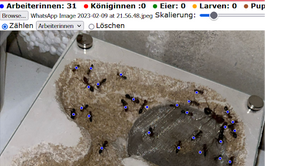 ( in the picture you can see the colony a couple days before leaving hibernation, couple workers are not on the picture)
( in the picture you can see the colony a couple days before leaving hibernation, couple workers are not on the picture)
Feeding:
I feed my Cataglyphis nodus colonies a large variety of things. Some of the '' regular'' feeders are buffalo worms, dubias, redrunners and crickets. I almost exclusively feed them live prey because they're able to take them down really quickly without receiving damage. Besides the regular stuff, I've feed my colony many other things, including silverfishes, mealworms, grasshoppers, flies and brood of colonies. Also, they love hunting Messor workers so it's good fun for them when one of my Messor colonies escape and choose the wrong outworld to harass. I feed them a daily or a couple times a week depending on their brood status, sugar water is pretty much always available in their outworld ( together with drink water ).
Nesting:
I've moved this Cataglyphis nodus colony rather early to a nest. Normally I keep my Cataglyphis nodus colony in test tubes with a plaster bottom ( https://youtu.be/oTa...FO1wh2aPIuwQ664) but I wanted to try out how they'll do in a proper nest. I moved them to a self-made plaster nest with a watertower. Later when they got bigger, I added more plaster nests with water towers to their setup. Currently they're housing in 3 plaster nests with a water tower and one without a water tower. Oh and I use a 40x30cm plastic box with sand and plaster decoration as outworld.
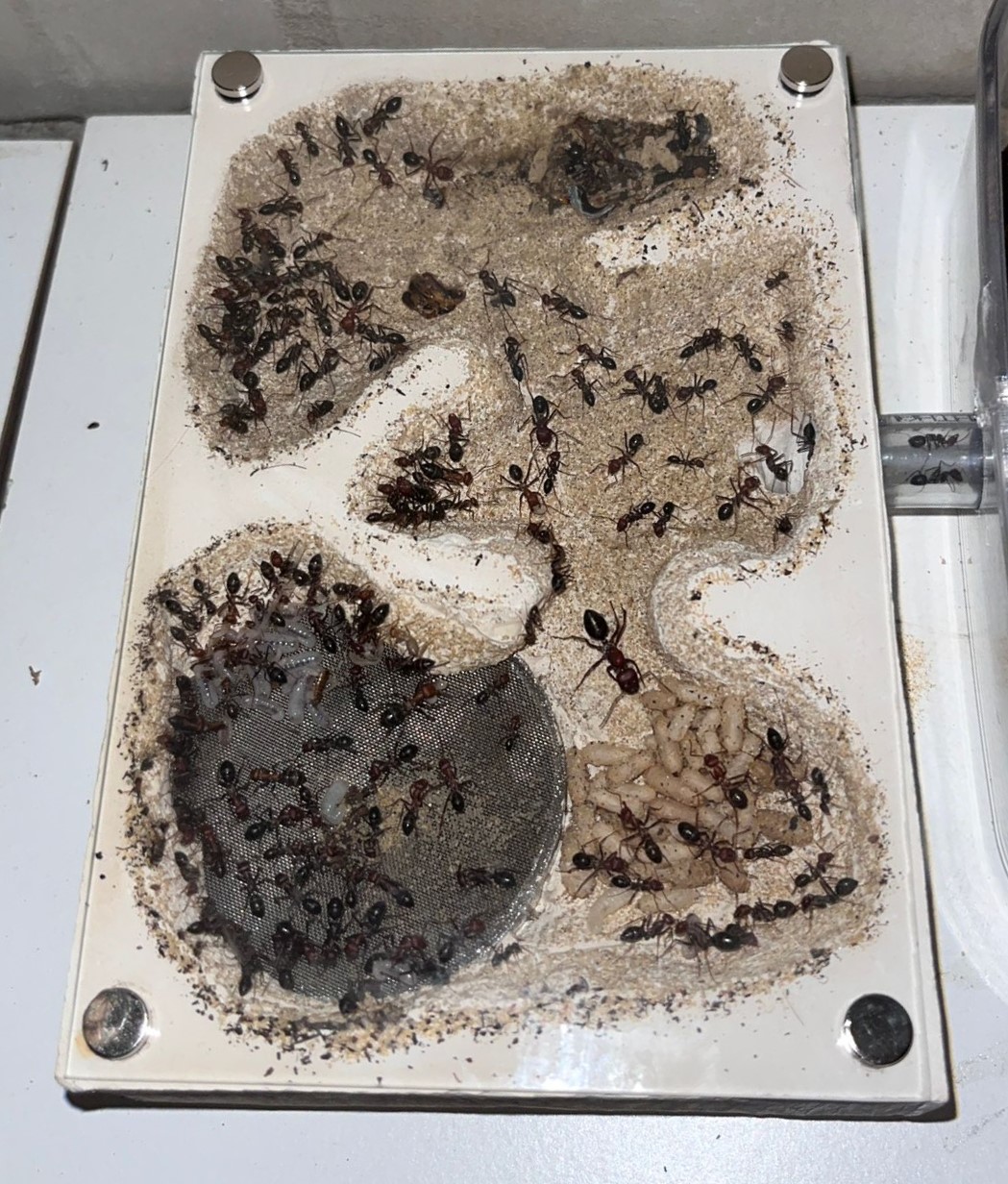 ( picture of their first nest )
( picture of their first nest )
Heating:
I've heated my colony by simply placing a heat mat on their nest covering half of it and once they got more nests, I began heating an entire nest to 38c. All the brood was kept in the nest that was heated while the queen was in the cooler nest, which makes sense because in the nature the queens don't stay directly under a stone that is exposed to sun while the brood is kept under it. I recommend everyone that is keeping Cataglyphis nodus to heat their colonies propely because it is a key factor for fast brood development. When feed and heated enough, egg to worker can take as little as 25 days with this species. My colony tripled in worker count in less than 3 months, which is an impressive speed for such a relativel big species.
A week or two ago, my colony entered hibernation. Closing the season with an impressive 375+- workers ( started the season with 30+- workers ) . I'm still feeding them a couple insects a week but they aren't too interested in them ( they don't have brood). I've also stopped heating them because it'd be nothing but electricity waste to heat them now.
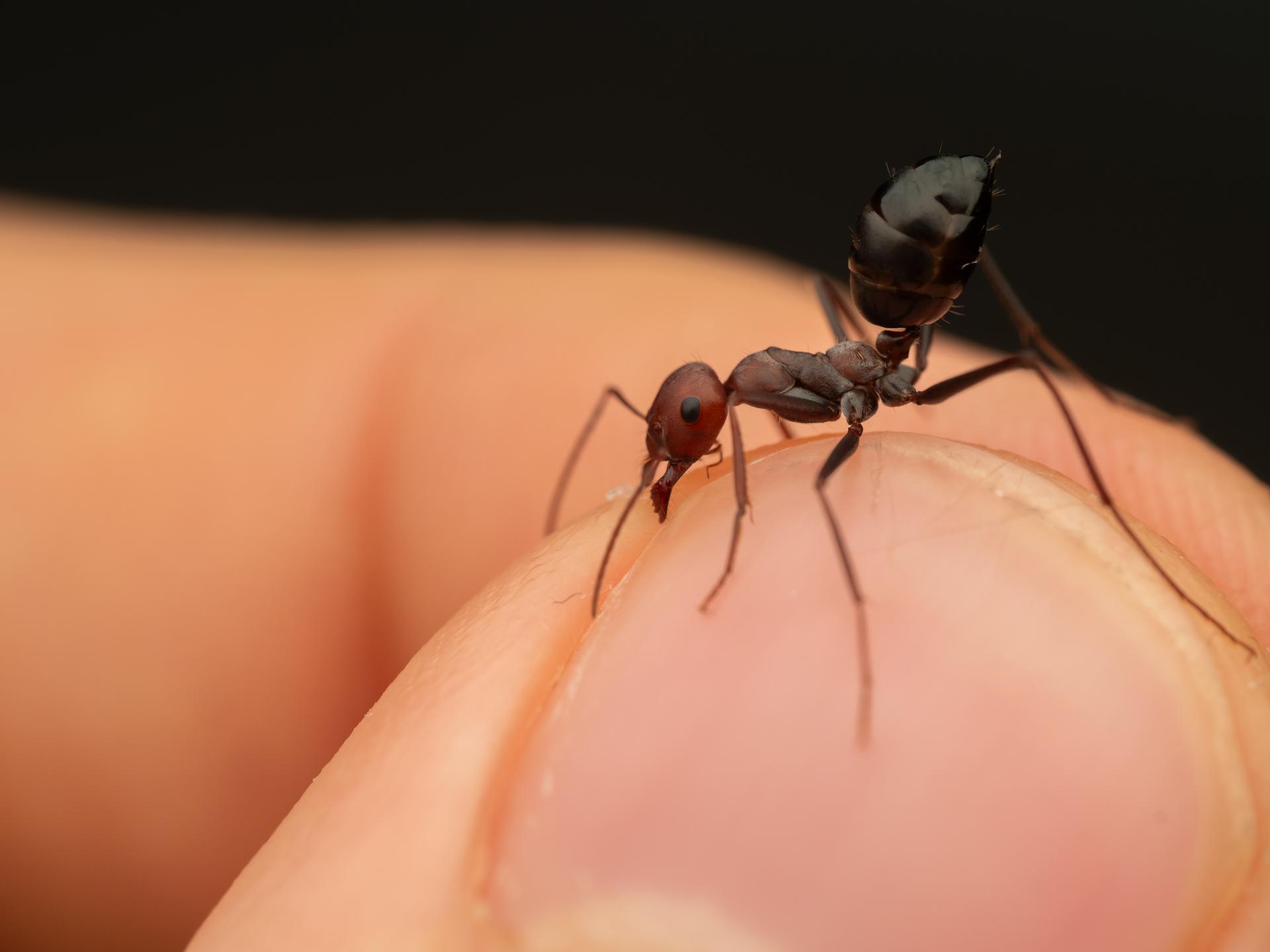
- Formiculture.com
- Forums
- Gallery
- Members
- Member Map
- Chat


